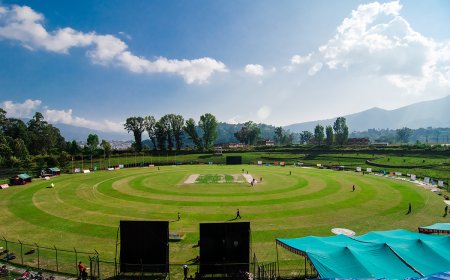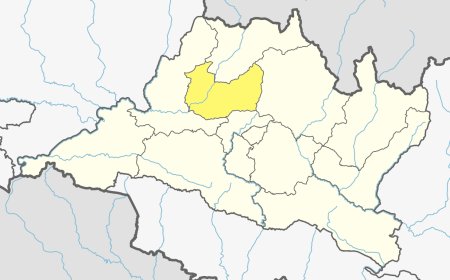The Origin and Development of Ayurveda: From Mythology to Modern Times
Unveiling the ancient wisdom of Ayurveda: From mythology to modern times, discover the origins and development of this holistic healing system that has stood the test of time.

Ayurveda, the ancient system of medicine, has a rich history that spans thousands of years. It originated in the Indian subcontinent and is deeply rooted in the mythology, culture, and traditions of the region. Ayurveda encompasses a holistic approach to health, focusing on the balance of mind, body, and spirit. Over time, it has evolved and developed into a comprehensive system of healing, incorporating various branches and practices. This article delves into the origin and development of Ayurveda, tracing its roots from mythology to the present day.
Mythological Origins
The origins of Ayurveda can be traced back to Hindu mythology. According to ancient Hindu texts, Ayurveda was created by Lord Brahma, the God of Creation. Brahma wanted to alleviate the suffering of humans and decided to share the knowledge of healing with other gods. One of these deities was Dhanvantari, who became the divine source of Ayurvedic wisdom and transmitted this knowledge to mortal sages.
Ayurveda is often regarded as a divine science of revelation, blending personal insight with empirical observation. The mythological origin of Ayurveda emphasizes the significance of deep perception and inner vision in addition to practical experience.
Development in Ancient Times
The early development of Ayurveda can be traced back to the ancient Indus Valley civilization, which thrived around 2700 to 1500 B.C. The knowledge and practices of Ayurveda were documented in Sanskrit texts known as the Vedas. The Atharvaveda, the youngest of the Vedas, contains references to medical lore and serves as an important source for Ayurvedic principles.
During the golden age of Ayurveda, from around 800 B.C. to A.D. 1000, significant advancements were made in the field. Three major treatises emerged during this period, known as the Senior Triad: Charaka Samhita, Sushruta Samhita, and Ashtanga Hridaya Samhita. These texts provided a comprehensive understanding of various aspects of Ayurvedic medicine and laid the foundation for further development.
Charaka Samhita, attributed to Agnivesha and redacted by Charaka, covers the principles of general medicine. Sushruta Samhita, attributed to Sushruta, focuses on surgical practices and techniques. Ashtanga Hridaya Samhita, compiled by Vagbhata, combines the knowledge from Charaka and Sushruta Samhitas, along with Vagbhata's own contributions.
Ayurvedic Scholars and their Contributions
Several renowned scholars made significant contributions to the development of Ayurveda throughout history. Bharadwaj, a revered sage, is considered the first person to learn Ayurveda from the gods and impart this knowledge to humankind. Aatreya, Agnivesh, and Charaka were among the notable disciples and scholars who further refined and expanded the Ayurvedic principles.
Agnivesh, a disciple of Aatreya, authored Agnivesh Tantra, an important treatise that formed the basis for Charaka Samhita. Charaka, known as the father of Ayurvedic medicine, thoroughly revised and expanded Agnivesh Tantra, making it the renowned Charaka Samhita.
Sushruta, another distinguished figure in Ayurveda, compiled Sushruta Samhita, which detailed surgical techniques and principles. Sushruta's contributions to plastic surgery, including reconstructive surgery and rhinoplasty, were far ahead of their time.
Acharya Vagbhata combined the knowledge from various Ayurvedic treatises and compiled Astanga Sangraha and Astanga Hridaya, which served as important references for Ayurvedic education and practice.
Development in Nepal
Nepal, with its deep connection to Hindu culture and traditions, has played a significant role in the development and preservation of Ayurveda. The country boasts a long tradition of Ayurvedic practices, with festivals and rituals deeply intertwined with Ayurvedic principles.
The medicinal plants found in Nepal's diverse geography have been instrumental in the development of Ayurveda. The country is home to around 1,700 documented species of medicinal plants, and Ayurvedic practitioners have utilized these plants for their healing properties for centuries.
The Nepal Ayurvedic Medical Council (NAMC), established in 1988, has been instrumental in promoting and regulating Ayurvedic education and practice in Nepal. It grants recognition to medical qualifications, accredits medical schools, registers practitioners, and monitors medical practice in the country.
Ayurvedic Education and Hospitals in Nepal
Nepal has a robust system of Ayurvedic education. Currently, there are 11 recognized colleges throughout the country offering courses such as Bachelor of Ayurvedic Medicine and Surgery (BAMS), MD Ayurveda, PCL in Ayurveda and General Medicine, and TSLC in Ayurveda.
Nepal is also home to various Ayurvedic hospitals and health centers. The Central Ayurveda Hospital in Naradevi, Kathmandu, serves as a prominent institution with 150 beds, providing a range of Ayurvedic treatments, including Panchakarma, acupuncture, and laboratory services. Additionally, there are district hospitals, regional hospitals, and dispensaries that offer Ayurvedic healthcare services to the public.
Modern Revival and Global Influence
In recent years, there has been a resurgence of interest in Ayurveda worldwide. As people seek holistic and natural approaches to health and well-being, Ayurveda has gained recognition as a complementary and alternative medicine system.
Nepal, with its rich Ayurvedic heritage, has also witnessed a renewed focus on Ayurveda. The government, through various statutory bodies like NAMC, has taken steps to promote and regulate Ayurvedic practices. The cultivation and preservation of medicinal plants have been encouraged, and Nepali pharmaceutical companies have gained recognition for their Ayurvedic products.
Conclusion
The origin and development of Ayurveda are deeply intertwined with mythology, ancient texts, and the cultural fabric of the Indian subcontinent. From its mythical origins to the golden age of Ayurveda and its subsequent development in Nepal, this ancient system of medicine has evolved and thrived over thousands of years. Today, Ayurveda continues to influence healthcare practices globally, offering a holistic approach to health and well-being that integrates mind, body, and spirit.
What's Your Reaction?








































































































